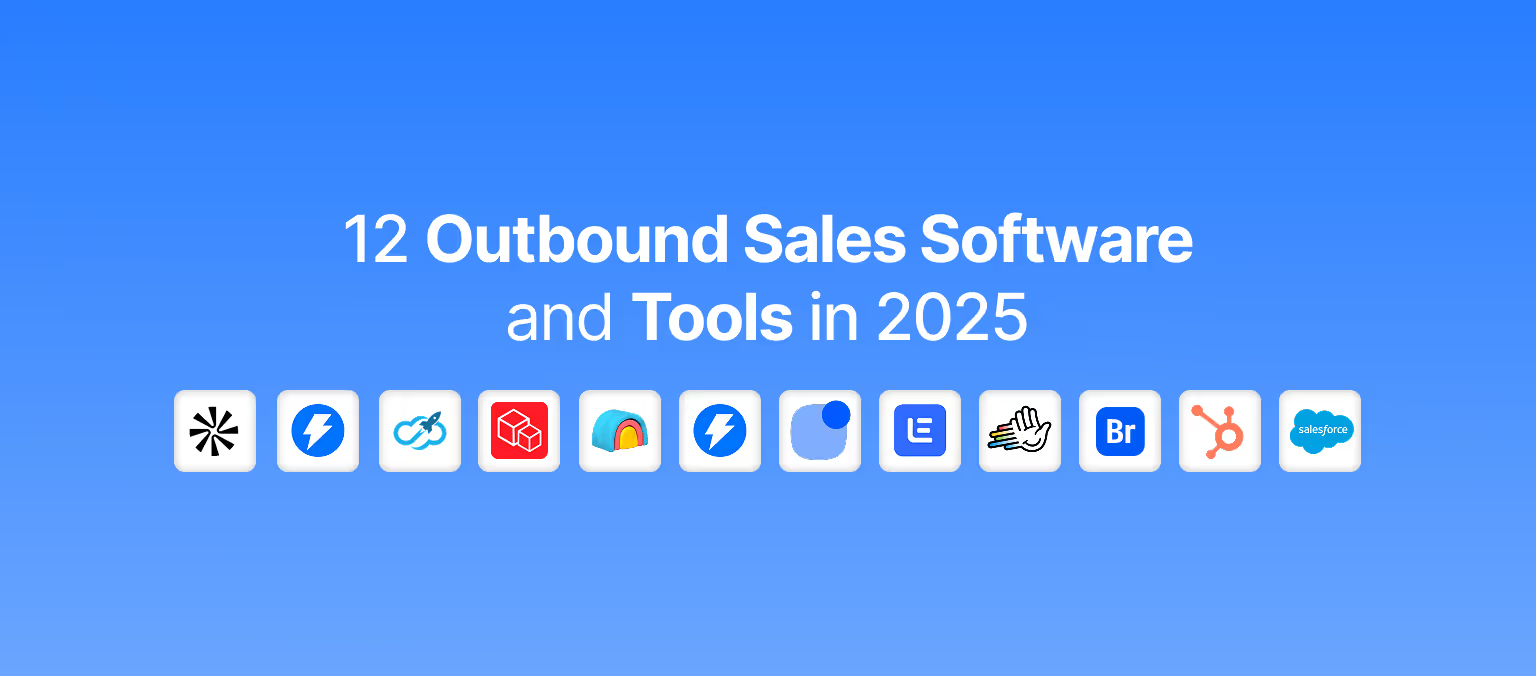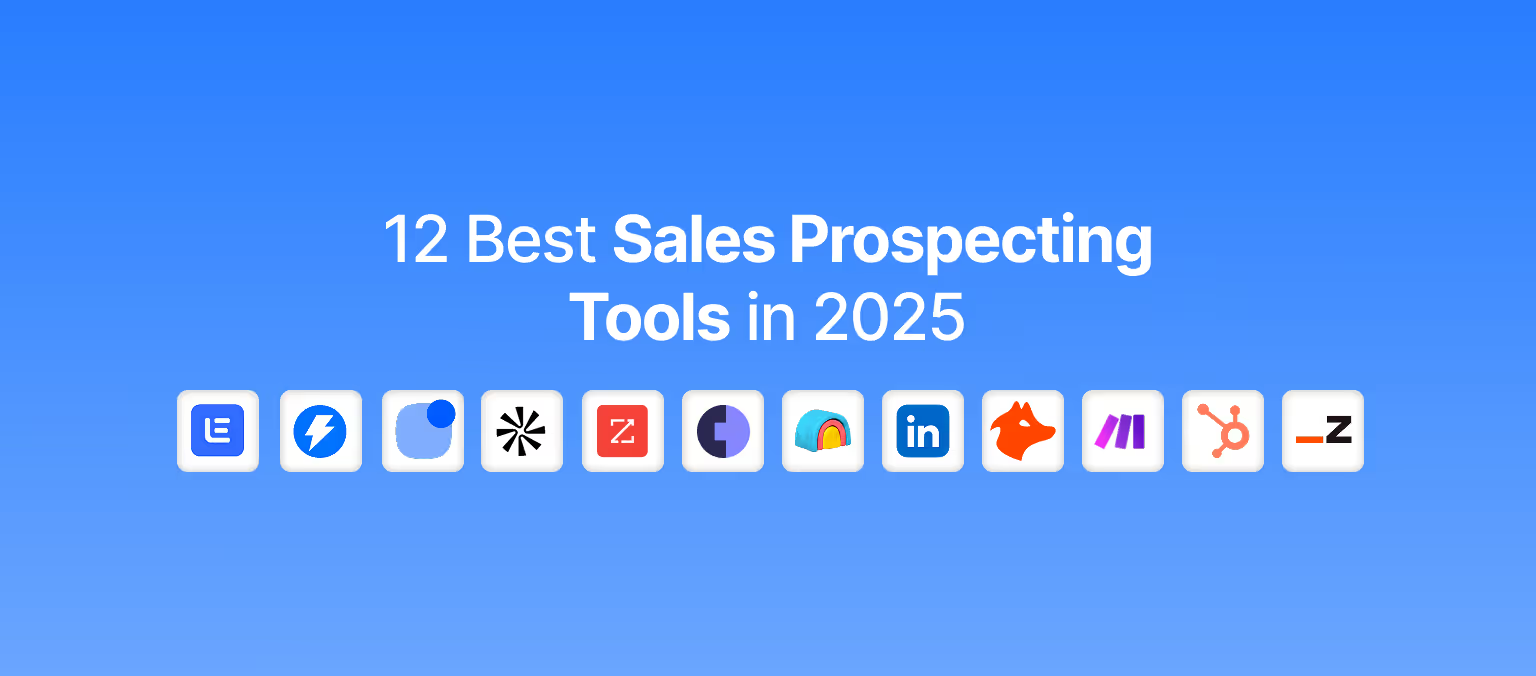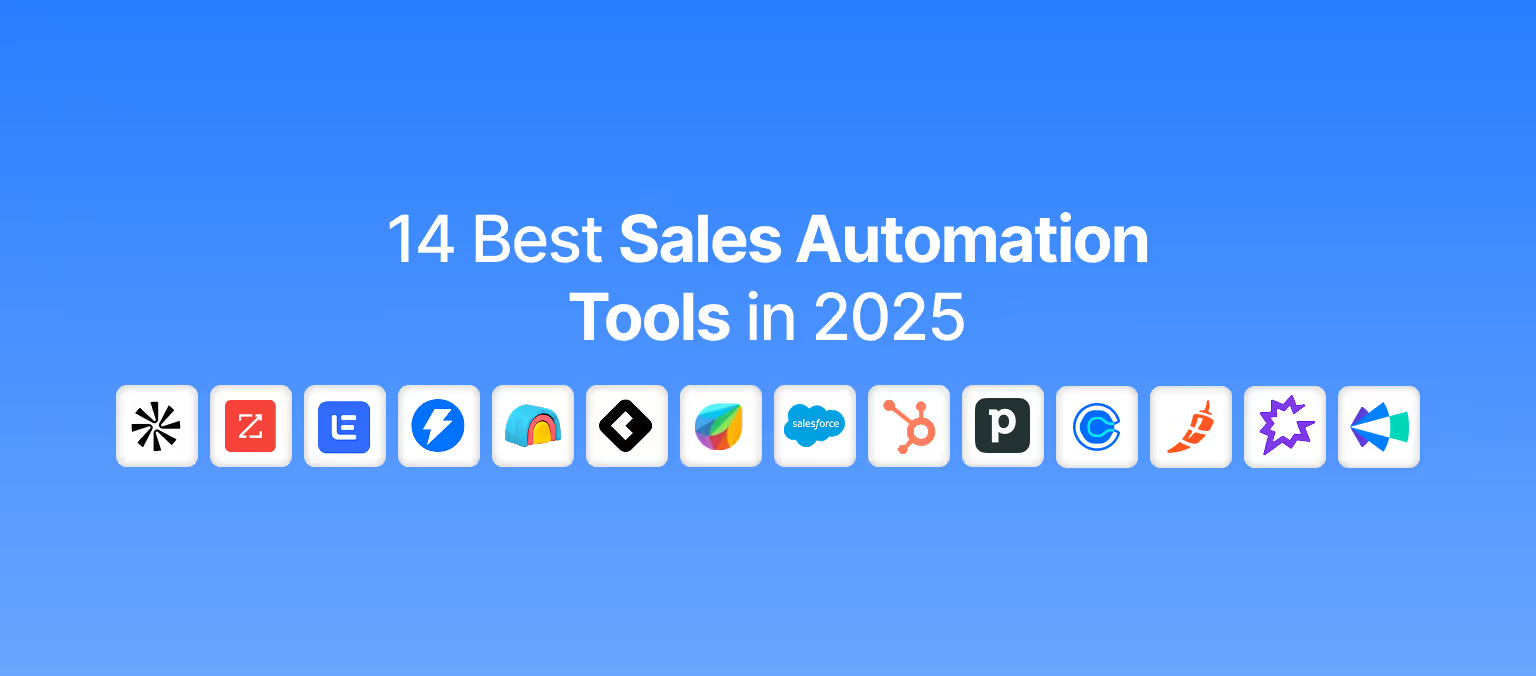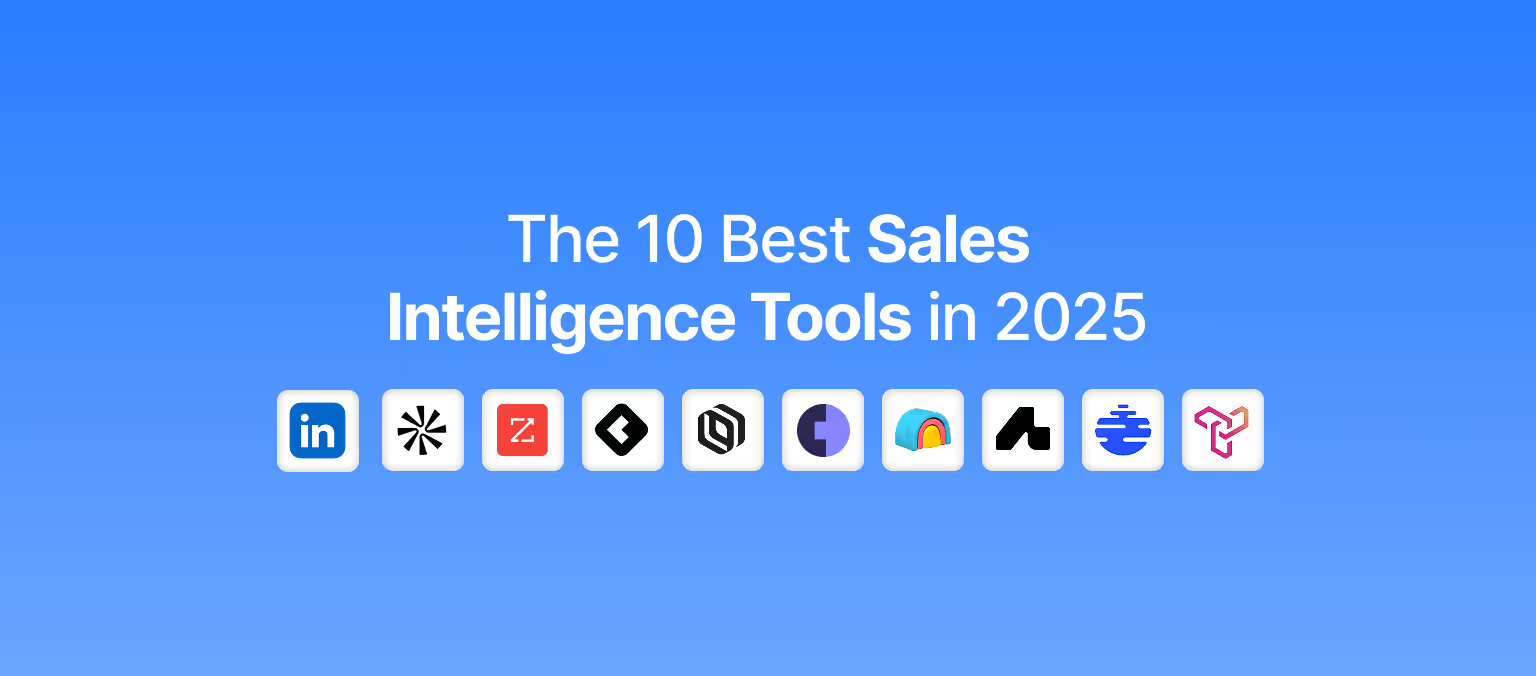How to Segment Your Cold Email Lead Lists to Improve Outbound Results
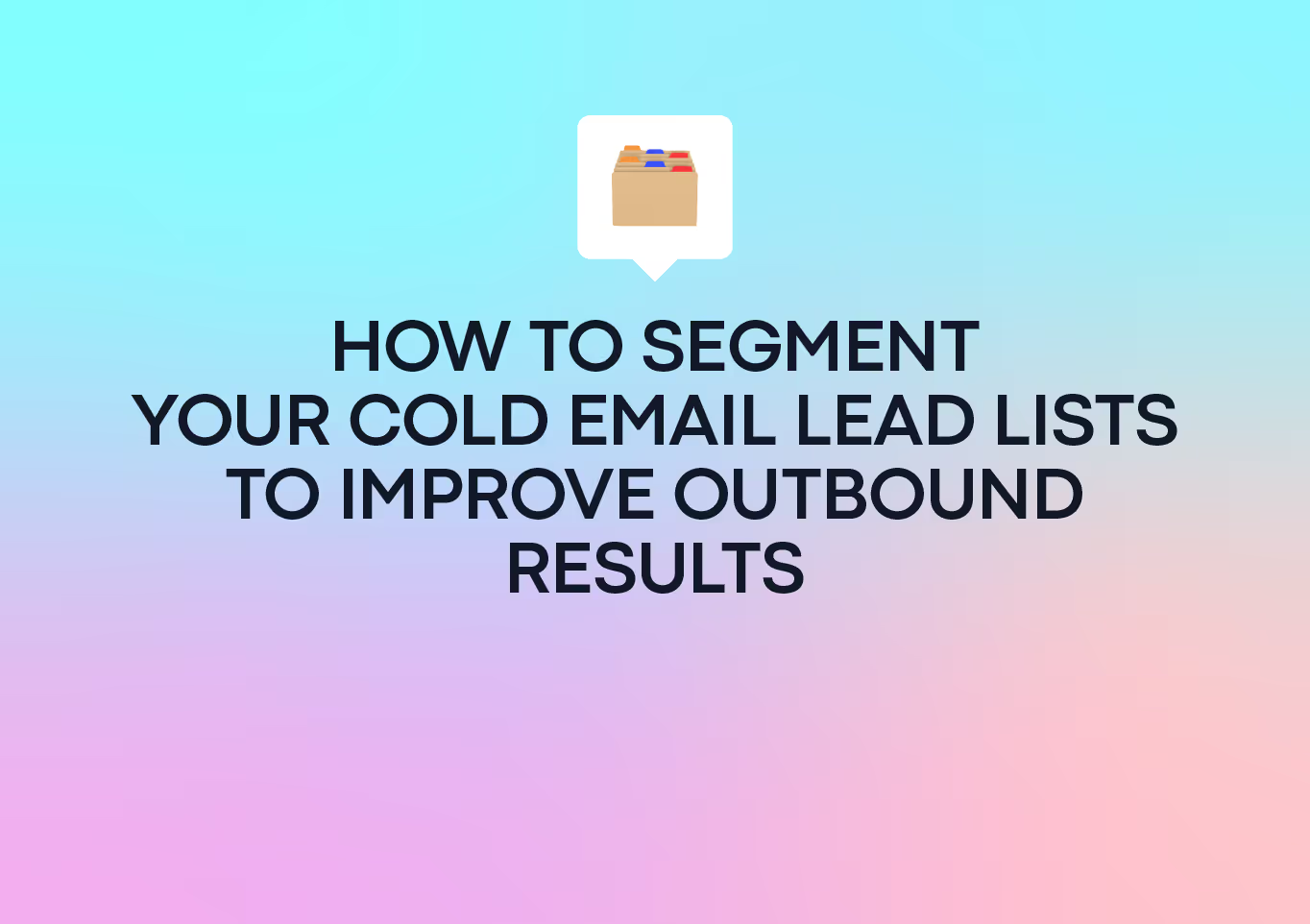
You’ve worked hard building your lead list, verified their contact information, and sent a well-crafted email to close them — only to find out they do not need your product or service. This is the common tale for many sales reps who engage in poor targeting.
To narrow down the type of prospects you need to reach out to, you must segment your cold email lead list. Lead segmentation groups your leads into smaller lists, enabling a more targeted campaign. In this article, you will learn how to segment your lead list effectively.
What is Lead Segmentation?
Lead segmentation involves dividing your collection of leads into smaller groups based on similar characteristics or activities. This approach allows you to reach the right audience with the right message, increasing the likelihood of engagement and conversions.
Types of Lead Segmentation
Lead segmentation can be a game-changer for your outbound lead generation strategy. You can segment your lead list using different methods, depending on your specific goals. Here are five ways you can segment your lead list:
1. Demographic segmentation
Demographic segmentation involves categorizing your leads into distinct groups based on demographic attributes such as age, education, gender, occupation, income, and marital status.
For instance, a skincare product manufacturer can segment its products by age group for different business clients. While the company would supply some retailers with skincare products for kids, some retailers may only have anti-aging skincare products for older people.
2. Geographic segmentation
Geographic segmentation categorizes your campaign activity based on your lead’s location — city, country, or region. The goal is to tailor your sales efforts to fit the unique needs of the people in the specific geographic areas.
For instance, a tire manufacturing company that distributes tires to retailers can use geographical segmentation to address different regional needs. Retailers in cold climates would get supplied with more winter tires and more grooves to better grip on ice or snow. Meanwhile, retailers in summer climates would get a supply of summer tires with fewer grooves to improve their driving experience.
3. Behavioral segmentation
Behavioral segmentation distributes your target audience into distinct segments based on factors like their actions, behaviors, and interactions with your product or services. Businesses that offer various features can use behavioral segmentation to track their customer’s preferences and tailor its campaign to suit those preferences. Common online behaviors include web page visits, email signups, content downloads, and more.
4. Technographic segmentation
Technographic segmentation filters lead based on the tech tools, software, or platforms they use. For instance, if your business helps firms build their sales software stack and your lead doesn’t use data enrichment tools, you can create targeted campaigns to promote your products for these firms.
5. Transactional segmentation
Transactional segmentation categorizes customers based on their buying patterns. It groups leads based on metrics such as recent purchasing behavior, frequency of purchases, monetary value, and more.

Why Segment a Lead List?
Here are a few reasons why lead segmentation is essential to your cold email campaigns:
Clean Database
Lead segmentation enables you to identify and weed out leads who are not interested in your business’s offerings. This process lets you focus on leads that truly matter, leading to more email opens, response rates, conversions, and improved sender reputation.
Targeted Personalization
A segmented lead list encourages a targeted and personalized cold email campaign to the intended recipients. It allows you to tailor your messages to specific groups based on similar characteristics and behaviors.
Let’s say you have a software company with many leads from different industries. You can segment these leads based on industries, customizing each email content to address the specific challenges in those sectors. While the message to a cybersecurity lead may highlight security features, the message to a lead in the gaming sector can focus on improving user experience.
This targeted approach will not only enable you to understand your recipient’s industry but also result in creating relevant content that captures their attention and resonates with their needs. This increases different metrics such as higher open rates, higher response rates, and ultimately, an improved conversion rate.
For Better Adaptability
Lead segmentation allows you to tailor your business offerings to the unique features and preferences of specific groups. For instance, consider an EdTech company like Coursera that offers B2B and B2C solutions. This company must tailor its solutions to fit the distinct needs of each segment based on its business models.
While its B2B emails can focus on work efficiency, team collaboration, and business growth, the B2C emails can focus on individual benefits such as new careers, networking opportunities, and improved learning processes. This adaptability ensures you tailor your messages to the diverse needs of specific audiences, increasing the likelihood of engagement.
Make Informed Decisions
Failing to segment your lead list means you won't find key insights about specific segments. Rather than looking at the data across each lead segment, you'd classify them as one group.
This approach could lead to making inferior choices based on aggregate values rather than the actual data. However, segmenting your list provides more information about each segment and prompts you to make data-driven decisions.
How to Segment Your Cold Email Lead Lists
Let’s dive deeper into how to segment your cold email list.
1. Categorize your ICP Based on Specific Criteria
Categorize your ideal customer profile (ICP) based on specific criteria or related unique characteristics. These characteristics form the basis for dividing your B2B cold email list.
For instance, you can segment your lead list based on the organization's decision-making hierarchy, technologies, revenue, and more. Consider their job titles and their responsibilities.
This process helps tailor your sales efforts to the right people within your lead list and create content that resonates with them. Besides, you’d save time by disqualifying leads that don’t fit your profile.
Here are some common segmentation criteria among B2B cold email marketers:
2. Find data on those segmented groups.
Data is another crucial element in segmenting your lead list. Collecting high-quality customer data provides a deeper understanding of your leads and categorizes them effectively for targeted cold email campaigns.
To achieve this goal, you must collect data through multiple forms such as:
- Using web analytics to track visitor’s behavior on your website. This provides insights into their interests and level of engagement. Some common website behaviors include web page visits, content downloads, and more.
- Including website signup forms with relevant fields to collect information such as company size, industry, geographical location, business goals, and more.
- Use data enrichment platforms to find your lead’s valid email addresses and phone numbers. This contact information enables you to reach your leads and pitch to them effectively.
3. Organize your Leads
Organizing your sales leads can take place in two ways: using spreadsheets (Google Sheets or Microsoft Excel) or sales management software. A spreadsheet allows you to organize your leads — especially when you don’t have a CRM.
It features various built-in options such as drop-downs, functions, filters, and more — to better manage your leads. However, scaling with spreadsheets is a bit difficult due to its limited functionalities.
Nonetheless, here is an example of a lead list using a spreadsheet:
On the other hand, sales management software such as a CRM streamlines your sales processes much easier than spreadsheets. You can easily sort information by values or categories like stage, priority, activity, date, behavioral event, and more.
You can also set up automatic workflows to cover and update information on each lead when new data is available. This approach allows targeted and personalized cold email campaigns, improving engagement and increasing conversion among each defined segment.
4. Score Your Leads
Assessing your lead’s overall quality through “quantitative points” helps you determine whether they are worth pursuing. You can assess this quality based on their level of engagement and relevance to your business. This helps discover leads that not only convert but become high-value customers
Track demographic or behavioral actions such as industry, job title, web page visits, email opens, clicked links, content download, and more. For example, let’s say your best customers come from companies in the legal industry with over 1,000 employees.
You can assign 50 points to someone from a legal company with over 1,000 people but subtract 50 points from anyone who submits a form with a personal email address and lists their job title as “legal advisor.” You must note that the numerical value depends on your lead scoring model.
Thanks to this process, you can concentrate your focus on leads that matter. Also, regularly monitor and review the scoring criteria to accommodate future changes. For instance, you can reduce a lead’s score if they haven’t engaged with your product for a certain period. Score degradation helps remove leads who are less promising over time so you can prioritize who matters.
5. Automate the Process
Gathering and analyzing data manually takes time, requires resources, and increases the chances of human error. However, automating the process can streamline the process and create efficiency. Use relevant automation tools such as data analytics, CRMS, etc., to streamline your workflow.
These tools allow you to set up predefined rules and conditions based on specific criteria like level of engagement, demographics, behavior, and more. You can also implement algorithms to assign leads to different segments in real time.
For instance, you can send only positive replies to CRM for follow-up tracking. You can also remove negative replies from your re-engagement workflows and future lists through CRMs and blocklists.
These automation tools continuously analyze data and allow your segmented list to adapt to changes in lead behavior. This process ensures you have streamlined operations and optimizes your campaign processes.

Lead Segmentation Best Practices That Improve Outbound Results
Let’s explore some best practices associated with a successful lead segmentation strategy.
1. Define Clear Objectives
Your segmentation strategy should have specific objectives and align with your overall sales goals. Do you intend to generate more qualified leads? Are you aiming to improve your conversion rate?
Having clear objectives can achieve effective segmentation and guide your sales efforts. You can identify areas in your sales process that can achieve these objectives and set realistic targets for getting there. This streamlines your sales cycle and helps you generate more sales opportunities.
2. Update Your Database
An effective lead segmentation strategy requires quality data. Inaccurate or outdated data would misguide your efforts, leading to poor targeting and missing out on important sales opportunities. For instance, if you segment your leads based on the previous year’s buying pattern, you may not align with their current needs and preferences.
Hence, you should regularly update and validate your customer data to ensure accuracy. Also, consider using relevant tools such as data enrichment services, CRM systems, or analytic tools to build a rich database.
3. Avoid overcomplicating segmentation
Overcomplicating segmentation involves using too many or too few segments for your lead list. Creating too many segments can complicate your outreach efforts and make management difficult. Similarly, creating a few segments can prevent you from addressing your lead’s specific needs, leading to generic and irrelevant sales messages.
Due to these issues, it’s essential to strike the right balance during segmentation. Evaluate and adjust your segments based on your goals, resources, and data. This dynamic approach will not only create an effective and manageable process but also allow you to adapt changes to the audience's behavior and preferences over time.
4. Personalize your Emails
Lead segmentation is the first step to improve outbound results. But you need to personalize your cold emails to each segment. Personalization refers to tailoring your email content to fit your lead’s specific needs, interests, behaviors, or preferences.
For instance, email content created to target segments within a geographical location differs from an email created based on job titles. This approach allows you to create relevant, targeted campaigns that drive direct impact and fuel the sales pipeline.
5. Test and Optimize Your Segments
Failing to test and optimize your segments yields minimal results. What works for one segment may not work for another. Hence, you must continuously test and optimize your segmentation approach for an effective and relevant result.
For instance, you can use A/B testing to refine your messaging for each segment and see which performs better through metrics like open rates, click-throughs, and conversions. Or you can test the timing for each segment to determine what works best. You can also use analytics to measure your cold email performance and make adjustments where necessary.
Key Takeaways
- Categorize your ICP based on specific characteristics such as job titles, industry, software stack, and more. This approach allows you to create highly-targeted groups within your lead list.
- Collect high-quality data to understand your leads more deeply and categorize them effectively.
- Organize your lead list using spreadsheets or CRMs to sort your leads and update their information when necessary.
- Automate your lead segmentation process to streamline your workflow and create efficiency.
- Need help with sales prospecting and outbound email campaigns? ColdIQ can help you achieve stellar results with cold email marketing. Get in touch with us today.
FAQ
Begin by grouping leads based on clear, measurable traits like industry or job role. Start small. Use existing data to avoid overwhelm and build from there as you learn what works best.
Review your segments regularly, ideally every few weeks, to keep information fresh and relevant. This helps avoid stale data problems and improves targeting over time, adapting quickly to market changes or customer behavior shifts.
What role does lead scoring play in segmentation?
What are common pitfalls when segmenting cold email lists?
Let's Get Started!
Schedule a 30-minute call with ColdIQ leadership to learn how our outbound strategy and sales tools help generate qualified leads and close deals.
.avif)
.svg)


